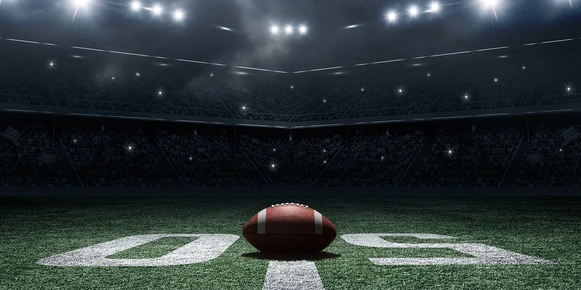NFL Rules You Need to Know to Enjoy the Super Bowl
- Sports
- Super Bowl
by Gametime

Even if the Super Bowl is the most famous event in American sports and buying Super Bowl tickets is often a once-in-a-lifetime occurrence for most fans, it doesn’t mean everyone is that acquainted with football. Some folks are just getting acquainted with the sport or only watch the Super Bowl. For those folks, we wanted to share some of the fundamental NFL rules of the game that new and novice football fans need to know if they’re going to understand and enjoy the Super Bowl experience.
11 Players on Each Side
The most fundamental NFL rule that novice football fans should know is that there are 11 players on the field for each team at all times. Substitutions can occur in between plays, but all plays begin with 11 players on both sides of the ball. Hopefully, novice fans will start to understand the role of each position throughout the game because explaining it to a newcomer can be complicated.
Length of the Game
The other fundamental aspect of football is the length of the game. Every football game, including the Super Bowl, is divided into four 15-minute quarters. It might be worth mentioning that the clock stops when the play ends with an incomplete pass, a ball carrier runs out of bounds, and when there’s a change of possession. This is why it can take three hours or more to play a 60-minute game.
How Many Points for Each Score
While it’s easy to learn this during a game, it’s good to teach newcomers to football about the scoring system before the Super Bowl. First, touchdowns are worth six points, which is more than any other score. After a touchdown, the team has a chance to kick the ball through the uprights from 35 yards out for an extra point, which is why teams typically increase their score by seven points after a touchdown. If a team fails to reach the end zone but gets close enough to kick the ball through the uprights, it’s called a field goal and is worth three points. All field goals are worth three points regardless of how far away the kicker is from the uprights. Finally, if an offensive player holding the ball is tackled in the end zone his team is defending, it’s called a safety, which is worth two points for the defensive team.
Run or Pass
Anyone who’s new to football should understand that every play is either a run or a pass. The team possessing the ball usually has a pre-determined play that they try to execute. Either the quarterback or another player will try to run with the ball, or the quarterback will attempt to pass the ball to another player, usually further down the field.
Making a Catch
This is where the rules of football can start to get complicated - even for those who have watched for a long time. To be considered a catch, the player catching the ball must have full possession of the ball and then touch two feet inbounds without stepping on the sideline. If they have two feet inbounds but are falling to the ground, the player must retain possession of the ball on the way down and after they make contact with the ground. If the ball hits the ground before the receiver gains possession of the ball, it’s an incomplete pass.
Getting a First Down
One of the most important aspects of football is getting a first down. Of course, defenses are trying to prevent the team on offense from getting a first down. Achieving a first down happens by moving the ball 10 yards from the initial spot of the ball, which is called the line of scrimmage. A team has four plays to move the ball 10 yards. If successful, they earn a first down and get four more plays to move the ball 10 yards forward on their way down the field. As long as a team continues to get first downs, they retain possession of the ball.
What Happens on Fourth Down
Officially, teams have four plays to get another first down. However, if they don’t achieve a first down in those four plays, then the ball goes to the other team. And this is why, on fourth downs, teams often punt the ball away if they haven’t achieved a first down. Punting gives the ball to the other team but gives them further to go for a touchdown than if the team was unsuccessful in gaining a first down on four plays. For teams that are close to the end zone but haven’t quite reached it, fourth down is usually when they attempt a field goal to score three points. Of course, teams will sometimes attempt a regular play on fourth down in hopes of getting a first down, knowing that if they don’t get a first down, the ball goes to the other team in a more favorable position.
Length of the Field
Finally, it’s good for new football fans to know that every football field is the same size, which is not always the case in some sports. Whether it’s the Super Bowl, a college game, a high school game, or a youth game, a football field is always 120 yards in length and 53.3 yards in width. The end zone on each end of the field is 10 yards in length, leaving 100 yards in between the two goal lines. This is why most fans look at football fields as 100 yards in length, even though the two end zones add an additional 20 yards of space.





